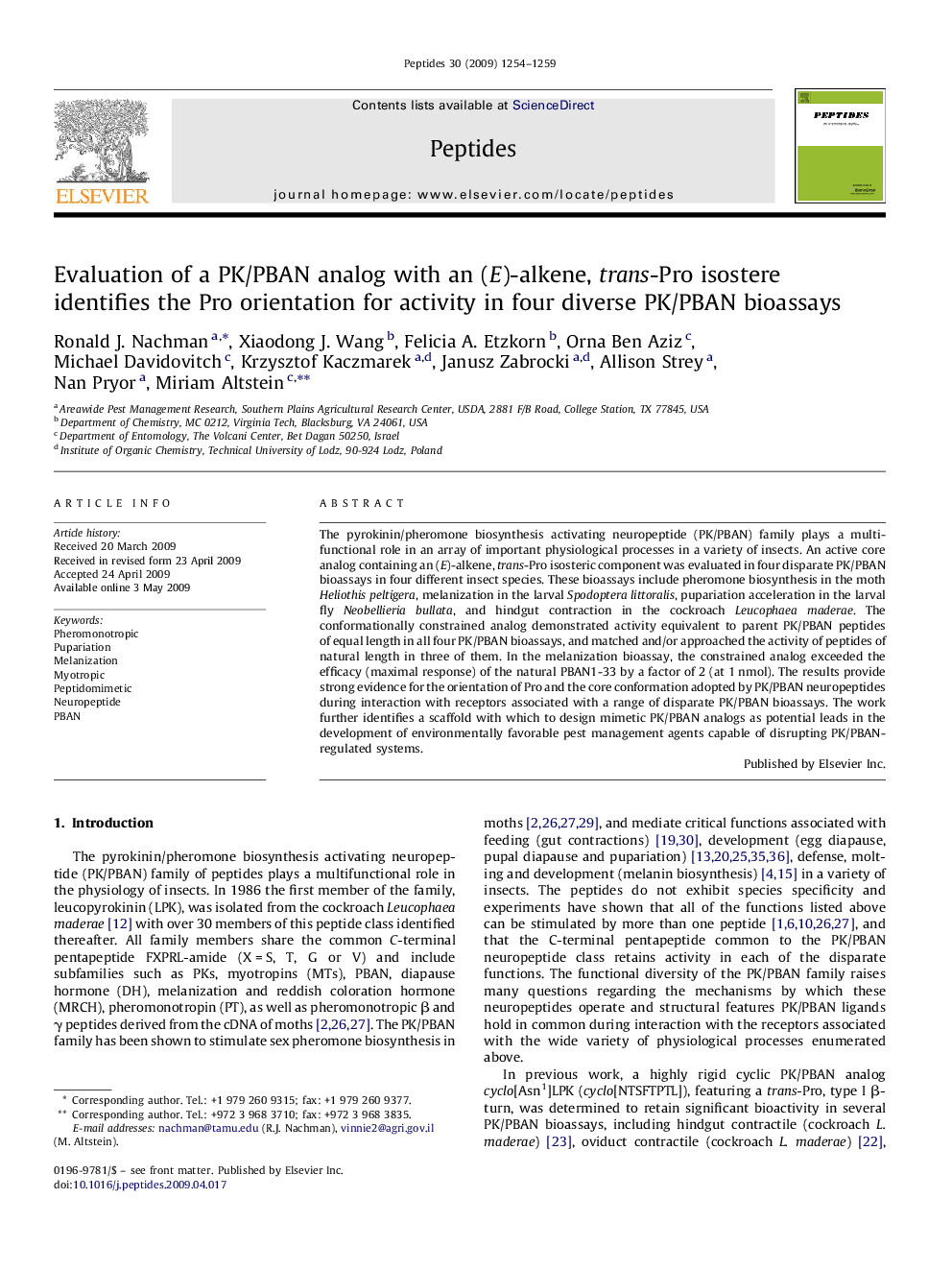| Article ID | Journal | Published Year | Pages | File Type |
|---|---|---|---|---|
| 2006717 | Peptides | 2009 | 6 Pages |
Abstract
The pyrokinin/pheromone biosynthesis activating neuropeptide (PK/PBAN) family plays a multifunctional role in an array of important physiological processes in a variety of insects. An active core analog containing an (E)-alkene, trans-Pro isosteric component was evaluated in four disparate PK/PBAN bioassays in four different insect species. These bioassays include pheromone biosynthesis in the moth Heliothis peltigera, melanization in the larval Spodoptera littoralis, pupariation acceleration in the larval fly Neobellieria bullata, and hindgut contraction in the cockroach Leucophaea maderae. The conformationally constrained analog demonstrated activity equivalent to parent PK/PBAN peptides of equal length in all four PK/PBAN bioassays, and matched and/or approached the activity of peptides of natural length in three of them. In the melanization bioassay, the constrained analog exceeded the efficacy (maximal response) of the natural PBAN1-33 by a factor of 2 (at 1Â nmol). The results provide strong evidence for the orientation of Pro and the core conformation adopted by PK/PBAN neuropeptides during interaction with receptors associated with a range of disparate PK/PBAN bioassays. The work further identifies a scaffold with which to design mimetic PK/PBAN analogs as potential leads in the development of environmentally favorable pest management agents capable of disrupting PK/PBAN-regulated systems.
Related Topics
Life Sciences
Biochemistry, Genetics and Molecular Biology
Biochemistry
Authors
Ronald J. Nachman, Xiaodong J. Wang, Felicia A. Etzkorn, Orna Ben Aziz, Michael Davidovitch, Krzysztof Kaczmarek, Janusz Zabrocki, Allison Strey, Nan Pryor, Miriam Altstein,
